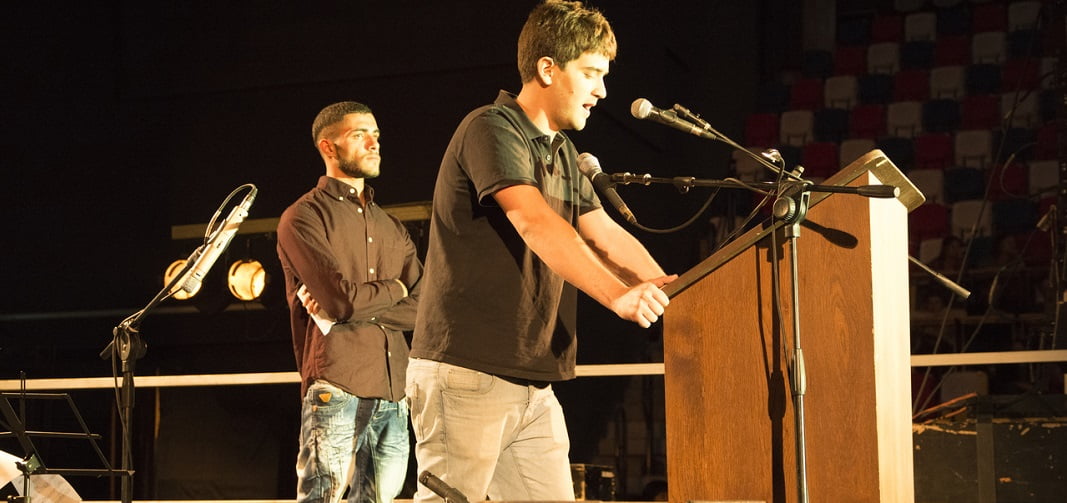Academic law literature defines transitional justice as a justice that enables the transition from major human rights abuses and injustice to democracy and reconciliation (Teitel, 2003; Bickford, 2004, Ní Aoláin, 2004). It is therefore associated with periods of major political change, and is mostly researched as a legal procedure concerning state actors that happens in lieu of or in concomitance with The Hague International Criminal Court. These political transitions are usually facilitated by trials, truth commission, reparation and compensation payments, official apology, history books update, commemoration day, establishment of museums etc (Torpey, 2003).
Transitional justice and Israel/Palestine?
The ongoing violence of protracted conflicts causes large-scale traumas to both parties in four domains: social, economic, political, and psychological (Fuertes, 2004; Meyerstein, 2007). Due to the all-encompassing nature of the pain and destruction, it is generally held that the transitional justice process can only start when both human rights abuses and conflicts have ceased. Therefore, from an exclusively legalistic concept (Campbell, et. al, 2009: 18), the Israel/Palestine conflict does not qualify to benefit from the transitional justice process (Meyerstein, 2007; Kapshuk, 2019; Hilal, 2012).
This being said, recent literature from the humanities and social sciences broadens the meaning, goals, and ways of the transitional justice process. Kaminski et. al (2016) defines transitional justice as any collective process aiming at edifying truth/justice/reconciliation. This academic approach considers transitional justice as a nonlinear human process that seeks to recognize victims and to promote possibilities for peace, reconciliation, and democracy (Fischer, 2010; Lambourne, 2013; Boraine, 2006; Skaar, 2012). Researchers therefore have assessed how civil society and social movements “deal with the past” as “extend[ing] beyond fixed transitional periods or juridical mechanisms” (MceVoy, 2007: 412). Critical trend in academic research have challenged the validity of fixed steps to be taken, and the overall thinking of a right versus wrong model to navigate the transitional justice process. These research argue that transitional justice and reconciliation were also facilitated by grassroots and victim-oriented initiatives; sometimes even before official transitional justice was initiated (Kapshuk & Strombom, 2021).
Transitional Justice and the Israel/Palestine Conflict
With one of my graduate students, a Palestinian, we launched in 2020 an online research survey asking Israelis and Palestinians to assess the relevance of the transitional justice process for the current conflict. We proceeded in two phases: first we taught the surveyed Israelis and Palestinians about transitional justice and its various steps; then we asked them to assess the relevance of each step and the order in which they believe those steps should occur in order to heal and transit toward reconciliation.
The first batch of quantitative results highlight groundbreaking agreements. First, both Israelis and Palestinians agree that transitional justice steps can help move forward together in a participatory manner, whether official peace negotiations are on the table or not. Second, they both agree that we need to start with a fair trial of criminals. From a critical perspective results hint at some hardship since the respondents disagree on who the criminals are. The qualitative results reveals the need for two separate trials done concomitantly. On the Palestinian side, Israel needs to place its own army officers and decisionnaries on trial (even post mortem), for what happened during the Nakba/Independence War of 1948-1949. During this period, Palestinians believe Israel conducted ethnic cleansing and committed mass massacres. On the Israeli side, the Palestinian Authority (or any other future state head) would need to officially condemn terrorism and put on trial those who committed acts of terrorism against Israelis since 1948. Our surveys show that once this first step is taken, Israelis and Palestinians disagree about the chronology of the next steps. This validates previous research showing that transitional justice process (even if constituted of similar steps across cases), can unfold differently in term of chronology (Herfroy-Mischler, 2013; 2016). Currently transitional justice literature does not provide concrete tools to reach an official decision from both side of the conflict on the establishment of those trials. Are we stuck? Not fully and here is why.
Is Pre-Transitional Justice actually happening here?
According to Kapshuk& Strombom (2021) Pre-Transitional Justice Activism “promotes transitions from a culture of denial and impunity to one of recognition and accountability”. Regarding the Israel/Palestine entrenched conflict, previous works have researched unilateral, bottom-up, extra judicial fact-gathering and truth-telling initiatives on the Israeli side such as Zorchot (Gutman, 2021) and Breaking the Silence (Eastwood, 2017; Dudai, 2018). Bilateral collaborative initiatives informed by the “contact hypothesis” (Kelman, 1982) investigate the role of planned and active encounters between Palestinians and Israelis via theater (Cohen, 2020) or reconciliation workshops (Maoz, 2000). Others such as the Parents Circle Families Forum have offered alternative non-state commemoration of the deceased from both sides of the conflict (Dudai, 2007). These are examples of Pre-transitional justice activism. They provide us with a mindful awareness that these already existing initiatives are a conduit of transitional justice to be.
These patterns of pre-transitional justice are both expanding and under researched. Amongst them are the non-judicial role of women in general (Israeli Women Wage Peace, Palestinian Women of the Sun) and religious women in particular (Rabbanit Leah Shakdiel at Oz ve Shalom, Rabbanit Hadassah Froman at Roots; Rabbah Tamar Elad-Appelbaum at Shalom Hartman Institute); artistically oriented reconciliation processes (FeelBeit, Ha Mifal in Jerusalem); Multifaith initiatives (Mekudeshet, Elijah, Mosaica, Jewish-Muslim house of study/Roots; Blicke Institute for Interfaith Dialogue etc). Whether official politics on either side like it or not, some Israelis and Palestinians already are living in a pre-transitional justice reality. They are ready to hear each other’s truth, advocate for justice about past human rights violations and actively heal each other’s pain via reconciliation. They already decided long ago to mourn over unsuccessful official peace talks and move onto reconciliation against all odds.

















